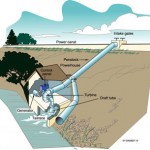Private players seem to have effected a game changing development!
They added almost half the total addition to power capacity.
 There are exciting developments in the power generating sector. It is the big role played by the private players, also called independent power producers, who totally alone produced half of the additional capacity in the last one year alone.
There are exciting developments in the power generating sector. It is the big role played by the private players, also called independent power producers, who totally alone produced half of the additional capacity in the last one year alone.
Given this trend
Exploit our own; there will soon be a new market-driven power production from the growing clout of these players.
Accordingly, we also need to redraw the new power production policy that would enable the private sector players more and more in the years to come.
Our own natural resources, hydropower/thermal and alternative energy sources.
Somehow our power sector debate has been pushed for a queer path.
It doesn’t seem to be a fashion to talk of our own natural resources, hydro power and thermal power from the coal. It is now a sort of fashion to talk of the distant civil nuclear power as the new energy supplies.
Also, we don’t seem to put any emphasis, lest it be mistaken, as relying on the biggest players like Reliance and Tatas in the current political environment where the emphasis should be on aam aadmi, rather than business with no nonsense!
Anyway, there are new energy sources, gas, petroleum and also much collaboration with foreign suppliers, from Iran to Russia.
This is the time or age of natural gas and petroleum exploration, to design foreign policy that takes care of our energy sources.
Unfortunately, there is not much public discussion or debate.
In parliament most MPs don’t seem to be talking in any depth on any basic issues like power deficit, energy source etc.
Repeatedly, we are talking about prices rise, especially about the rise of prices of petroleum.
Since most of our petroleum is imported, we run a heavy subsidy and so this is also politically making news and hence the substantive side of the energy and power supplies and deficits are not getting adequate exposure.
Our Prime Minister never talks and hence the people at large also don’t get a fairly balanced discussion on the country’s inherent strengths.
We seem to be talking too much about high profile areas like civil nuclear power, as if it is the only source of power that is within the reach and within India’s capabilities.
No one talks a bit more naturally. About own still untapped potential from our natural resources, like hydro power, coal sector power, wind power etc.
Also, some policy decisions that paid off like the role of the private sector power producers is left unmentioned or the real achievers left unhonoured.
There is also the mindset for the public sector power companies; we seem to talk of NTPC and the NHPC.
NHPC MD Mr.S K Gag says in a recent interview that India is endowed with abundant hydropower potential of about 149 gw (giga watts) of which only 25% has been developed so far. The remaining untapped potential ample opportunities to hydropower developers. NHPC alone is executing 11 new projects with an aggregate capacity of 4,622 mw, which will enable the company to become 9,500 mw plus company. This is good news.
After 2013, NHPC has set a new target of 12 more projects with aggregate installed capacity of 5,322 mw during the XI Plan. NHPC is presently operating 13 hydro projects. Total installed capacity is 5175 mw. NHPC is seeking clearances for projects about 10,000 mw.
NHPC can also pursue the thermal power generation option; it has a jt venture company for this.
The MD narrates the details of the jt ventures in Madhya Pradesh alone.
There is also a mini tidal power project in West Bengal.
There is the other biggest PSU, the NTPC, thermal power generating giant. NTPC and NHPC are the two giants and they hold the key to attain targets under the government’s long term vision. NTPC’s performances are very disappointing, just 990 mw added in 2009-10. With the private players, like Jindal steel, Tata power, Lanco Infratech. Adani power, Torrent power, the total capacity addition fell short of by a third of the 14,507 mw target set for 2009-10.
There is a 16 per cent power deficit in the country as on date.
SEBs is in a poor financial state. Their performance is bogged down in a variety of issues, from sheer politics, inefficiency to financial burdens.
Over the next three years, the contribution of the private players to our power capacity is expected to go up 11,250 mw, including Tatas’s 4,000 mw addition.
It is imperative we have to educate the public about the inevitability of the power prices going up.
What is the alternative?
The NTPC chairman, R S.Sharma says that state-owned NTPC has gas purchase agreements with Reliance and Qatar and other gas-rich regions to supply gas to drive our power producing Kayakulam and Dhabol power projects. We also need gas for our LNG (liquefied natural gas) terminal.
Qatar is the world’s largest exporter of gas.
Prices are bound to go up. People familiar with the developments say that the current uptrend in crude oil prices-which serves as a benchmark to gas prices-could lead to a 30-40% higher prices for natural gas also.
This economic reality must be driven home so that there are no shallow, partisan arguments and empty noises over the inevitability of the power prices going up. Of course this must be done wisely and in a steady and positive manner. Politicians must have courage to educate the people.
Image Source : heatboard.com